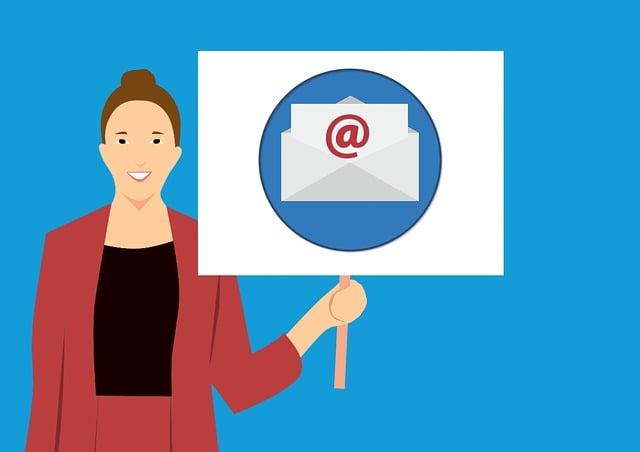Imagine you’re standing at the helm of your mobile app marketing campaign, navigating through the vast sea of users and potential customers. As a savvy mobile app marketer, you know that in order to steer your app towards success, you need a compass to guide you. That compass is email marketing metrics.
By tracking these essential numbers, you can chart a course that leads to increased engagement, higher conversion rates, and ultimately, a thriving user base.
In this article, we will explore the email marketing metrics every mobile app marketer should track to ensure their campaigns are on the right course. From open rates to click-through rates, conversion rates to bounce rates, and unsubscribe rates to engagement rates, we will delve into the data-driven world of email marketing.
By understanding and analyzing these metrics, you will gain valuable insights into the effectiveness of your email campaigns, allowing you to make informed decisions and optimize your strategies for maximum impact.
So, grab your metaphorical sextant and let’s set sail into the world of email marketing metrics, where data is your compass and success awaits on the horizon.
Key Takeaways
- Open rates and click-through rates are important metrics to track for email marketing success.
- Conversion rates and unsubscribe rates provide insights into the effectiveness of email campaigns.
- Churn rates, retention rates, and engagement rates help assess user engagement and refine email marketing strategies.
- ROI and email deliverability are crucial factors to consider for mobile app marketers.
Open Rates: Measure the percentage of recipients who open your emails
You’ll be thrilled to know that open rates are a fantastic way for you to see just how many people are eagerly opening your emails! By tracking the percentage of recipients who open your emails, you gain valuable insights into the effectiveness of your email marketing campaigns.
To improve open rates and increase email engagement, it’s crucial to focus on two key areas: email subject lines and segmentation strategies.
Crafting compelling email subject lines is essential to grab the attention of your recipients. Tips for improving open rates include using personalized subject lines, creating a sense of urgency, and keeping them concise yet intriguing.
Additionally, implementing segmentation strategies allows you to target specific groups of recipients with tailored content. This personalization increases the chances of recipients opening your emails and engaging with the content inside.
By optimizing email subject lines and utilizing segmentation strategies, you can improve open rates and set the stage for higher click-through rates (CTR). With CTR, you can track the percentage of recipients who click on links within your emails.
Click-Through Rates (CTR): Track the percentage of recipients who click on links within your emails
Engage with the heartbeat of your audience as they journey through the digital landscape, measuring the pulse of their curiosity with the click-through rates (CTR), an indicator of the paths they choose to traverse.
CTR optimization is crucial for email campaign effectiveness. It allows you to track the percentage of recipients who click on links within your emails, providing valuable insights into the engagement of your audience. By analyzing CTR data, you can identify which links are generating the most interest and tailor your email content accordingly.
This data-driven approach allows you to create more targeted and personalized campaigns, resulting in higher conversion rates. Speaking of conversion rates, they measure the percentage of recipients who complete a desired action after clicking on a link in your email, such as making a purchase or signing up for a service.
Transitioning seamlessly into the next section, tracking conversion rates is essential for assessing the overall effectiveness of your email marketing efforts.
Conversion Rates: Measure the percentage of recipients who complete a desired action, such as making a purchase or signing up for a service, after clicking on a link in your email
Immerse yourself in the power of conversion rates and witness the impact as recipients complete desired actions, such as making a purchase or signing up for a service, after clicking on a link in your email.
Engage your audience with these key metrics to optimize your email marketing strategy:
-
Conversion rates: Measure the percentage of recipients who take the desired action after clicking on a link in your email. This metric helps you evaluate the effectiveness of your email campaigns in driving conversions.
-
Open rates: Track the percentage of recipients who open your emails. This metric gives insights into the success of your subject lines and email content in capturing recipients’ attention.
-
Click-through rates (CTR): Measure the percentage of recipients who click on links within your emails. This metric indicates the level of engagement and interest generated by your email content.
-
Return on investment (ROI): Calculate the revenue generated from your email campaigns against the cost invested. This metric helps you assess the overall effectiveness and profitability of your email marketing efforts.
Now, let’s dive into the next section about bounce rates: tracking the percentage of emails that are undeliverable due to invalid email addresses or other reasons.
Bounce Rates: Track the percentage of emails that are undeliverable due to invalid email addresses or other reasons
Dive into the world of bounce rates and uncover the hidden depths of undeliverable emails, like a treasure lost in the sea of invalid addresses and missed opportunities.
Email deliverability is crucial for any mobile app marketer, as it directly impacts the success of your email marketing campaigns. Bounce rates are the percentage of emails that are undeliverable due to invalid email addresses or other reasons.
By tracking bounce rates, you can identify and eliminate problematic email addresses from your list, ensuring that your messages reach the intended recipients. High bounce rates not only waste your resources but also damage your sender reputation, potentially leading to your emails being marked as spam.
Understanding and addressing bounce rates will help you improve your email deliverability and maximize the impact of your mobile app marketing efforts.
Transitioning to the next section, let’s explore how to measure unsubscribe rates and mitigate email list attrition.
Unsubscribe Rates: Measure the percentage of recipients who choose to unsubscribe from your email list
Unsubscribe rates reveal the impact of recipient disengagement, shedding light on the effectiveness of your email communications and the potential loss of valuable connections. By measuring the percentage of recipients who choose to unsubscribe from your email list, you can gauge how well your messages resonate with your audience.
High unsubscribe rates may indicate that your content is not meeting their expectations or that your frequency of sending is too high. It is important to analyze these rates regularly to identify patterns and make necessary adjustments to your email strategy.
It is also crucial to consider churn rates and retention rates in conjunction with unsubscribe rates to gain a comprehensive understanding of user engagement.
Next, we will delve into engagement rates, which track the overall level of engagement with your emails, including metrics such as time spent reading, forwarding, or replying to emails.
Engagement Rates: Track the overall level of engagement with your emails, including metrics such as time spent reading, forwarding, or replying to emails
Engagement rates provide a window into the depths of your audience’s interaction with your emails, unveiling the valuable moments spent devouring, sharing, or responding to your captivating content. This metric is crucial for mobile app marketers as it allows you to gauge how well your email campaigns are resonating with your audience.
By tracking engagement rates, you can measure the effectiveness of your email content and identify areas for improvement. Here are two key aspects to consider when analyzing engagement rates:
-
Time Management: Measure the average time spent reading your emails. This data can help you determine if your emails are engaging enough to hold your audience’s attention and if they are being consumed in a timely manner.
-
Email Content: Track metrics such as forwarding or replying to emails. These actions indicate that your content is compelling enough for recipients to take further action, showcasing the level of engagement and interest in your messages.
By diligently monitoring these engagement rates, you can refine your email marketing strategy, optimize your content, and ultimately drive better results for your mobile app.
Frequently Asked Questions
How can I improve my open rates for email marketing?
To improve your open rates for email marketing, focus on personalization techniques and email subject line optimization strategies.
Use data-driven insights to tailor your emails to individual recipients, addressing them by name and including relevant content based on their interests or past interactions with your app.
Experiment with different subject lines that are concise, compelling, and create a sense of urgency or curiosity.
Monitor the results of these efforts to see which strategies yield the highest open rates and adjust accordingly for optimal results.
What are some strategies to increase click-through rates in my emails?
To increase click-through rates in your emails, you should focus on personalization techniques and A/B testing strategies.
Personalization involves tailoring your emails to suit each recipient’s preferences and interests, which can significantly improve engagement.
A/B testing allows you to experiment with different elements such as subject lines, call-to-action buttons, and content layout to identify the most effective combinations.
By implementing these strategies, you can optimize your emails for higher click-through rates and achieve better results.
How can I optimize conversion rates in my email marketing campaigns?
To optimize conversion rates in your email marketing campaigns, you can utilize A/B testing and email segmentation.
For example, let’s say you have an online clothing store. By segmenting your email list based on past purchases, you can send tailored recommendations to each customer.
Additionally, by A/B testing different subject lines, call-to-action buttons, and email designs, you can identify what resonates best with your audience and improve conversion rates.
These data-driven strategies will help you achieve better results in your email marketing campaigns.
What are the common reasons for high bounce rates in email marketing?
Improving engagement and analyzing email content are key strategies to address high bounce rates in email marketing.
Bounces can occur due to invalid or inactive email addresses, technical issues, or unengaging content. To tackle this, regularly clean your email list, verify addresses, and use double opt-in.
Additionally, analyze your email content for relevance, personalization, and attention-grabbing subject lines. By focusing on these factors, you can reduce bounce rates, improve engagement, and optimize the effectiveness of your email marketing campaigns.
How can I reduce unsubscribe rates and retain more subscribers in my email list?
To reduce unsubscribe rates and retain more subscribers in your email list, implement subscriber retention techniques and effective email personalization.
Engage your audience with relevant and personalized content that addresses their needs and interests.
Use data-driven insights to segment your subscribers and tailor your email campaigns accordingly.
Regularly analyze metrics like open rates, click-through rates, and conversion rates to optimize your email marketing strategy and ensure it’s delivering the desired results.
Conclusion
Congratulations on reaching the end of this article! Now that you know the key email marketing metrics to track, you’re well on your way to achieving success with your mobile app marketing strategy.
By monitoring open rates, click-through rates, conversion rates, bounce rates, unsubscribe rates, and engagement rates, you’ll have a data-driven approach to optimize your email campaigns.
Remember, the irony is that while these metrics provide valuable insights, they can’t measure the true impact of your emails on your audience’s emotions and connection with your brand. So keep those results in mind, but don’t forget the human element behind the numbers.
Happy marketing!










